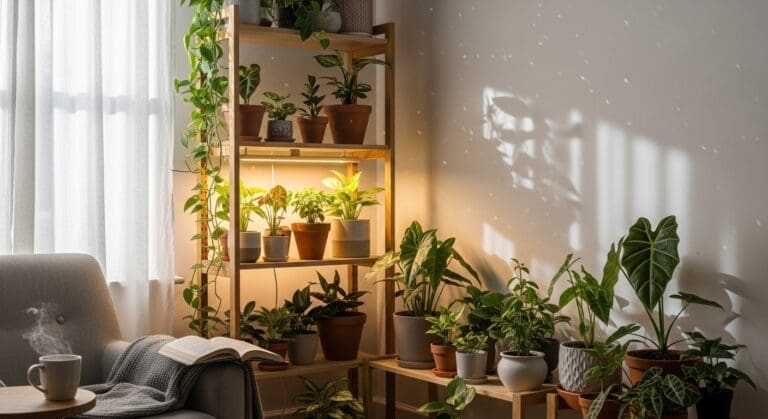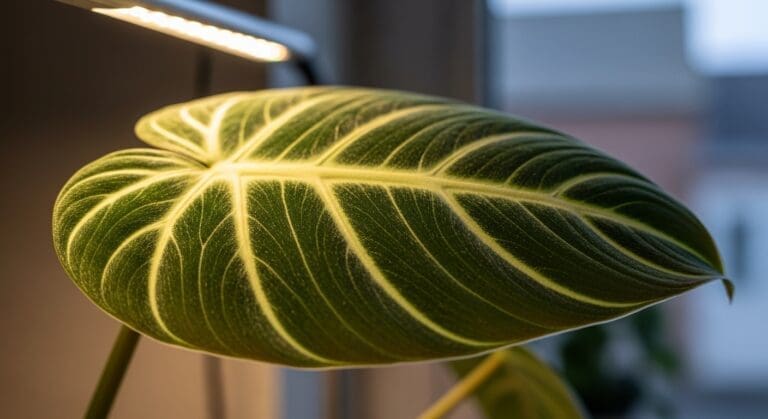There’s something magical about ferns — their lush fronds, delicate texture, and the way they bring a forest-like freshness into a home. But keeping them thriving year-round isn’t just about watering them once in a while. Ferns have seasonal needs that change with the shifts in temperature, daylight, and indoor climate. Learning to adjust your watering, lighting, and humidity routine across the year can mean the difference between a fern that barely survives and one that truly flourishes.
“I used to think my fern had ‘moods,’ but it turned out I just wasn’t changing my care with the seasons.”
In this guide, we’ll walk through how to adapt your care in spring, summer, autumn, and winter, ensuring your ferns stay as vibrant in December as they do in June.
| Season | Water | Light | Humidity (leaf-level) | Room safety | Do now |
|---|---|---|---|---|---|
| Spring | Increase gradually; keep mix evenly moist | Move slightly closer to bright, indirect | ~50–70% RH with gentle airflow | Keep room-average < ~60% RH | Refresh top mix; check pot weight weekly |
| Summer | Check more often in heat waves | Diffuse midday sun (sheer), avoid scorch | ~50–70% RH; steady airflow | < ~60% RH (ventilate if condensation) | Short humidifier bursts; raise fan duty |
| Autumn | Reduce slightly as growth slows | Shift to the brightest safe spot | ~50–65% RH; avoid big swings | < ~60% RH | Divide/repot if needed; trim spent fronds |
| Winter | Never bone-dry; water less but steadier | Sunniest safe window or add LED | ~50–60% RH; prioritize airflow | < ~60% RH; add ventilation as needed | Pull plant slightly from cold glass |
Sources: EPA (keep indoor RH below ~60%), ASHRAE (limit ~65% RH), RHS (indirect light & moist, free-draining compost).
Understanding Your Fern’s Seasonal Rhythms
Ferns may not flower, but they still respond to seasonal changes. In their natural forest environments, they experience wet and dry periods, as well as fluctuations in light intensity. Indoors, these changes still happen — just in more subtle ways.
Many botanical resources note that houseplants show seasonal growth patterns—longer days and warmer conditions drive faster growth, while short, cool, dry periods slow it down. Adjusting water, light and humidity with the seasons keeps ferns stable.
(You can learn more about seasonal plant cycles at The New York Botanical Garden.)
Spring: The Growth Kickstart
Spring is when ferns wake up from their winter slowdown. You’ll notice new fronds unfurling and faster overall growth.
- Watering: Increase gradually; keep the mix evenly moist—water when the top 1–2 cm just dries.
- Light: Move slightly closer to bright, indirect light (avoid direct midday).
- Humidity: Aim leaf-level ~50–70% RH with gentle, continuous airflow; keep the room-average < ~60% RH for household safety.
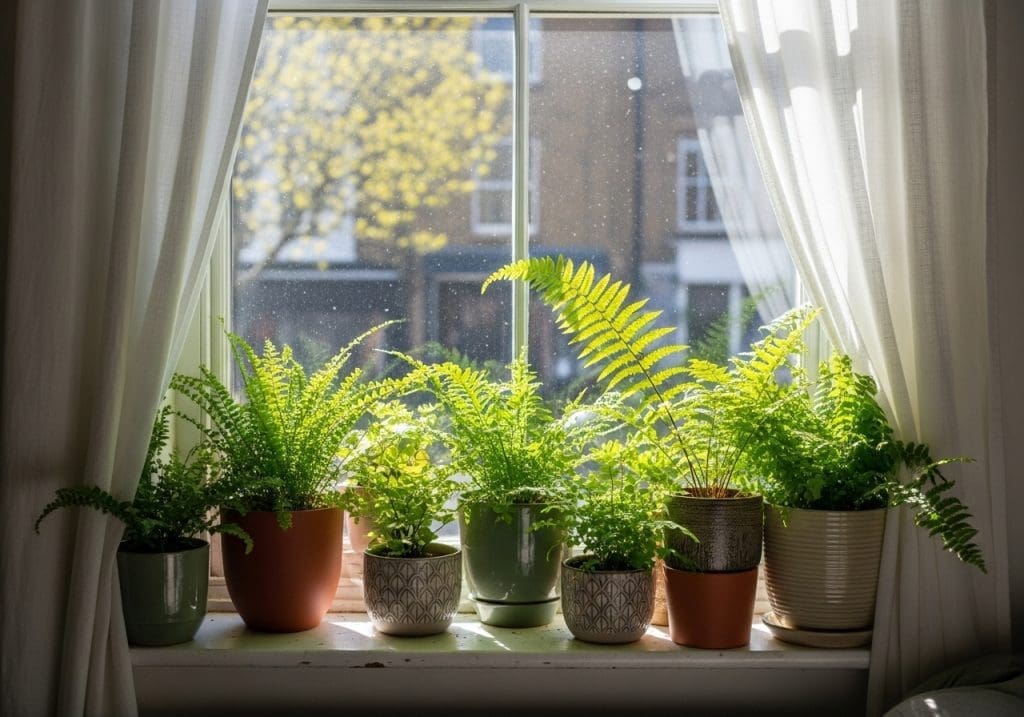
💡 When increasing watering, make sure you’re using the right substrate — see our guide on Best Soil Mix for Indoor Ferns.
Summer: Managing Heat & Light
Summer is both a blessing and a challenge. More light means more photosynthesis, but higher temperatures can cause stress.
- Watering: You might need to water every 2–3 days during heat waves, but always check soil moisture first.
- Light: Keep your fern out of direct midday sun — too much can scorch fronds. A sheer curtain is your best friend.
- Humidity: Short humidifier bursts + constant airflow are more reliable than hand-misting (which only raises RH for a few minutes). Use a hygrometer at leaf height to stay ~50–70% RH; ventilate if you see condensation.
“One summer, I left my Boston fern too close to the window — by the time I noticed, half the fronds had crispy edges.”
💡 For deeper summer care strategies, see Fertilizing Ferns: How to Keep Them Lush Year-Round.
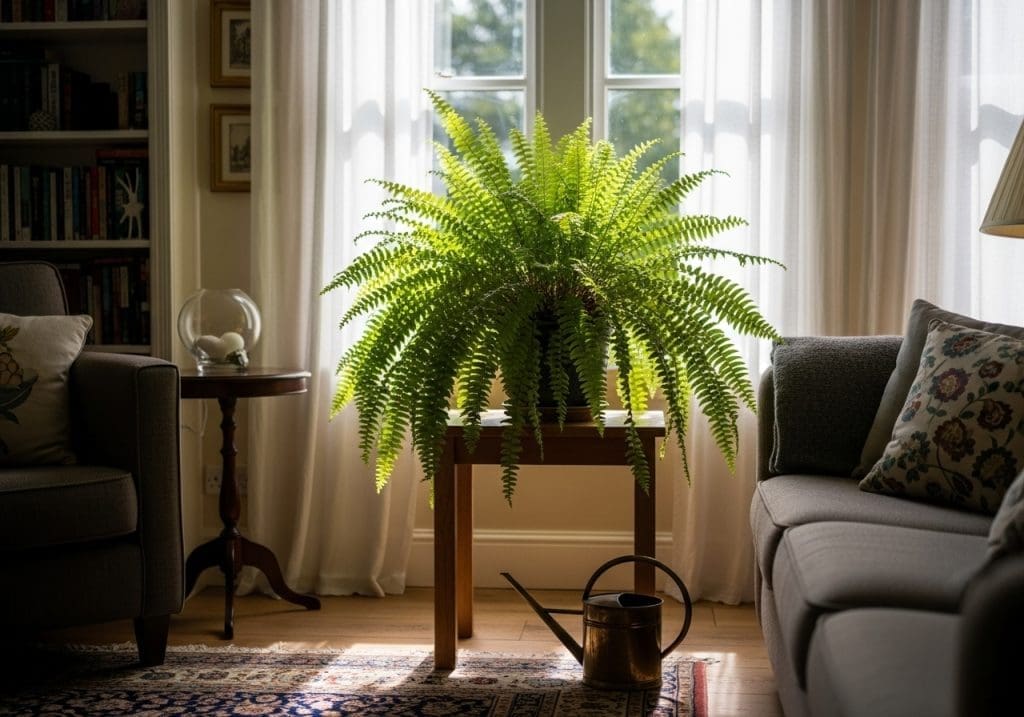
Autumn: Preparing for the Slowdown
As days shorten and temperatures cool, your fern’s growth will slow.
- Watering: Reduce slightly; confirm by pot weight and top-layer feel.
- Light: Shift to the brightest safe indirect spot; pull back if tips scorch.
- Humidity: Hold ~50–65% RH at leaf-level; keep room-average < ~60%; seal drafts, keep airflow steady.
💡 Planning to divide your fern during this slower period? Check out How to Propagate Ferns: Division & Spores Made Simple.

Winter: Surviving the Chill
Winter can be tough for ferns due to low light and dry air from heating.
- Watering: Water less but steadier—never bone-dry; “moist, not waterlogged.”
- Light: Sunniest safe window or add a LED; pull plant 10–20 cm off cold glass.
- Humidity: Target ~50–60% RH at leaf-level with airflow; keep room-average < ~60% RH (add ventilation if you see condensation).
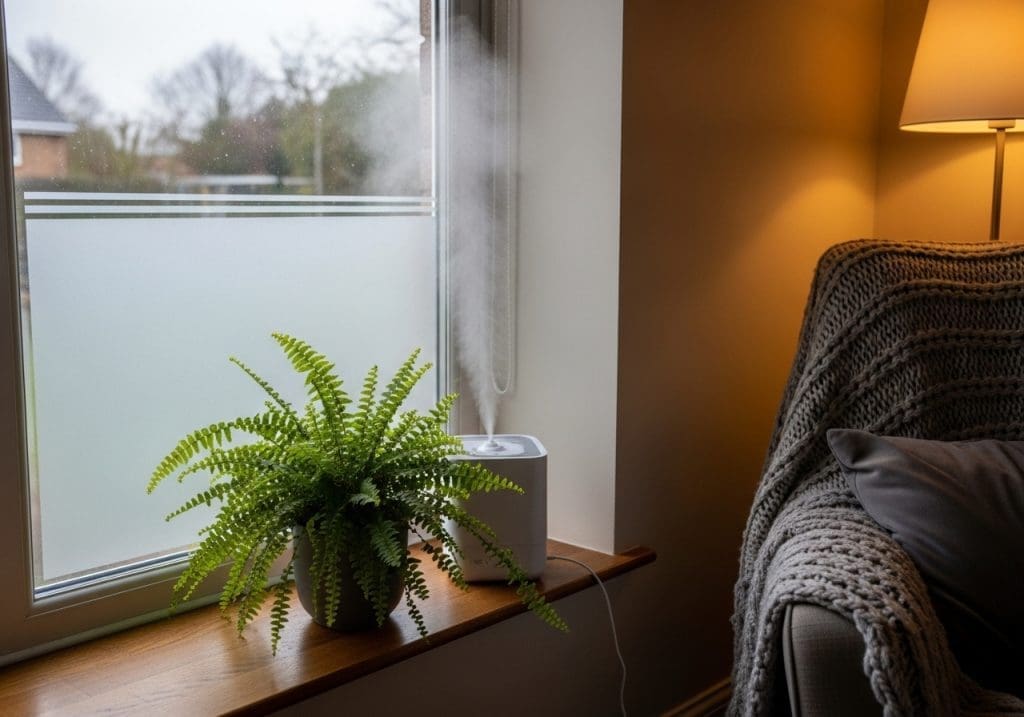
Common Seasonal Mistakes to Avoid
- Overwatering in winter — roots can rot quickly in cold, wet soil.
- Ignoring humidity — many ferns fail not from lack of water, but from dry air.
- Sudden light changes — moving your fern abruptly can cause shock.
- Relying on hand-misting: humidity spikes are temporary; use a humidifier + airflow and measure with a hygrometer.
Year-Round Fern Care Checklist
- Adjust watering every season based on temperature and light.
- Monitor humidity and use trays, misting, or humidifiers as needed.
- Keep your fern in bright, indirect light year-round, adjusting distance seasonally.
Build a leaf-level micro-zone (50–70% RH) with constant airflow while keeping the room-average safer for people (< ~60% RH). For symptom-based fixes, see our Troubleshooting Fern Problems guide.
Sources: EPA — keep indoor RH below ~60%; ASHRAE — limit to ~65% in occupied spaces; RHS — indoor ferns: indirect light, moist but free-draining compost; Penn State Extension — misting raises RH only briefly.
Change log: Aug 2025 — Added seasonal matrix; replaced unverifiable quote; clarified humidity targets & room safety with EPA/ASHRAE; corrected misting guidance per university extensions.

RarePlantCare Editorial Team produces expert content on rare plants.
Our articles are AI-assisted and human-edited before publication.
We aim to provide practical, evidence-based guides for plant lovers worldwide.
Learn more about our Editorial Policy



